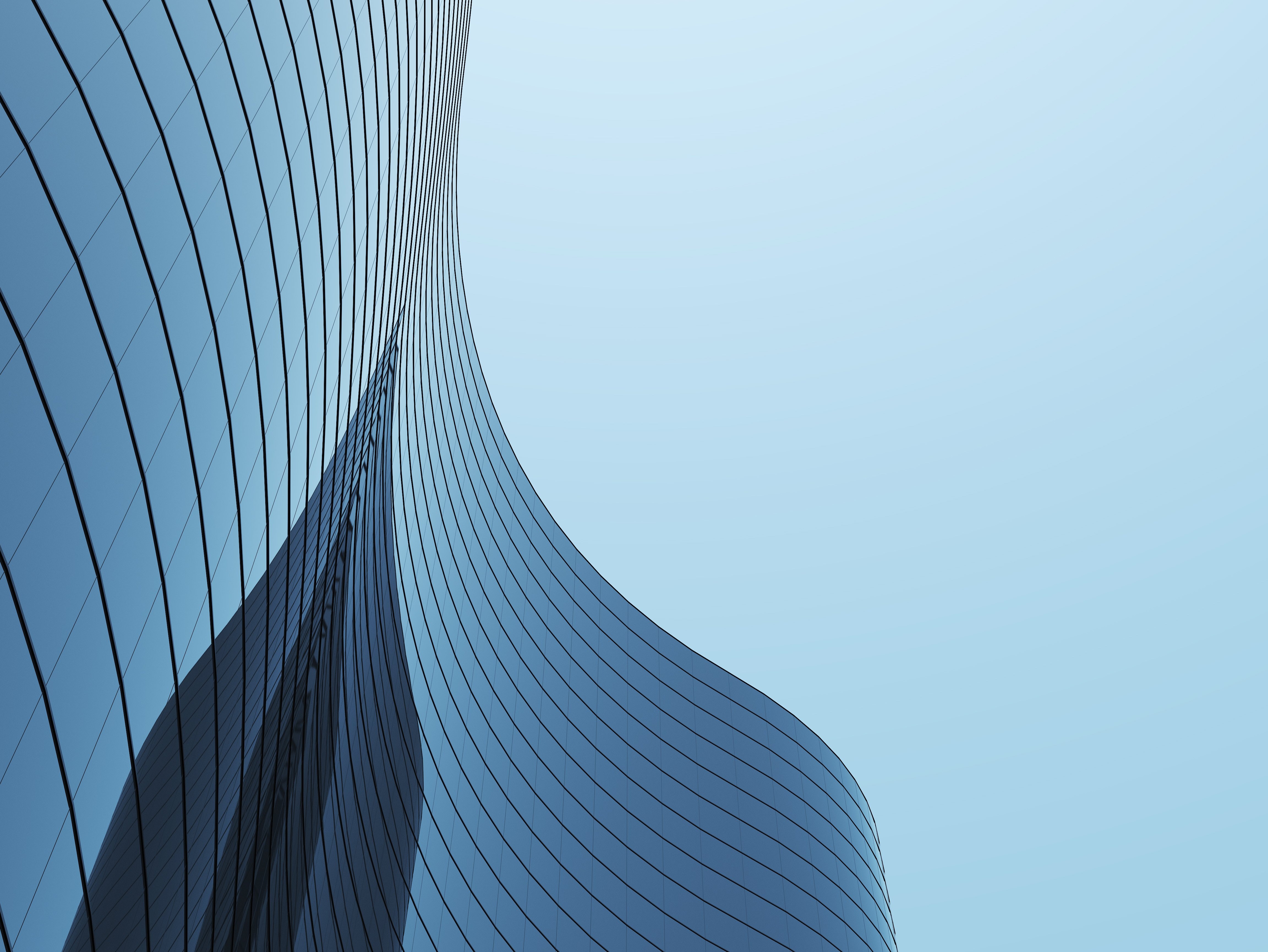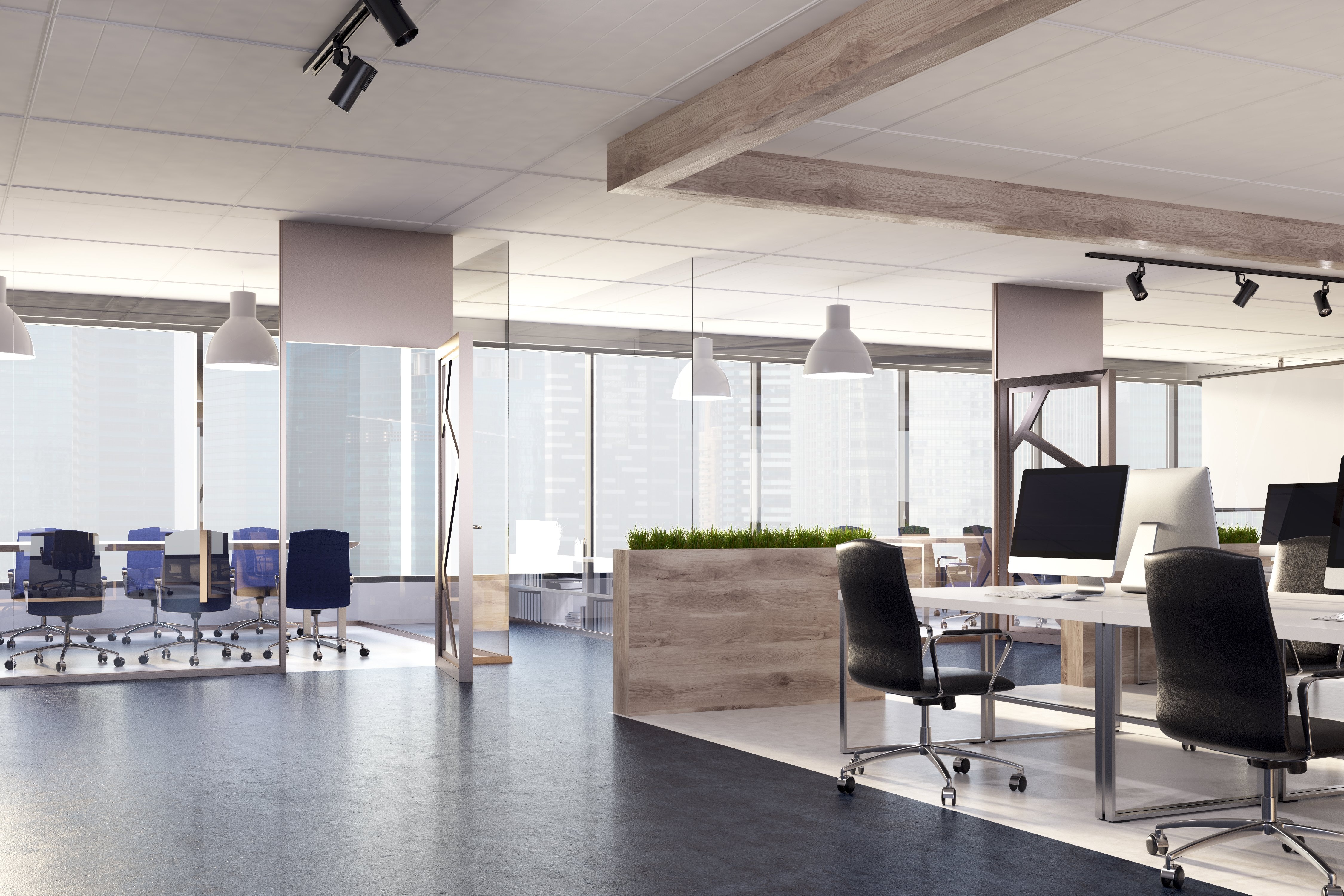The psychology behind building design
- Curved buildings decrease stress levels.
- Visual complexity of buildings increases positivity.
- Taller buildings motivate financial risk.
- Taller ceilings promote abstract thinking.
- Natural light from windows results in positive mental health.
- Wall colours can influence accuracy, imagination and retention.
- Plants can reduce stress, noise levels and absence/sickness rates.
Research indicates that human behaviour and emotion is massively influenced by our environments. The statistics show that we live around 80% of our lives indoors, surrounded by artificial light, plastic furniture, and unnatural soundscapes. Bland city planning is known to have a mental and physical toll on residents, with environmental variety being a huge bonus to mental health ratings amongst metropolitan populations. So besides lighting the occasional incense stick or scraping the internet for funny memes to show your co-workers, what’re some things that designers know will subtly increase our moods in the office? Here are some interesting design aspects of interior and exterior building architecture that influence our everyday behaviour.
Design buildings that boost mood
Building exteriors
1: Curved buildings decrease stress levels.

Strangely enough, curved buildings have been strongly linked to a reduction in stress levels, according to a 2007 study by Kayvan Madani Nejad. The study indicated that non-architects showed a significant positive response to curvilinear architectural forms. Nonarchitects found curvilinear forms to be pleasant, elevating and stress-reducing. The strongest relationship was recorded between curvature and feminine qualities of architectural space, which was shared by both architects and non-architects.
2: Visual complexity of buildings increases positivity.
Studies have shown the more complex and interesting the building design, the greater the positive effects on a subject’s physiology. A study conducted in Iceland in 2013 utilised virtual reality to present various residential streets to participants. Scenes with greater architectural variation were found to be the most engaging, with monotonous designs causing boredom.
3: Taller buildings motivate financial risk.

A study recently published in the Journal of Consumer Psychology found a significant link between the financial risk businesses are willing to take, and how high their office was located in a building. The connection extends beyond corporate entities, with another study focussing on bets made inside of glass elevators in tall buildings. In some cases, the elevator was ascending, and in others, it was descending. As the elevator ascended, those who travelled up to the 72nd floor were more likely to choose a riskier bet. The descending group, on the other hand, opted for a more conservative choice.
Inside the building
1: Taller ceilings promote abstract thinking.
Believe it or not, but working in an office with tall ceilings is scientifically proven to promote complex thought. These strange findings come from several experiments conducted by marketing scholars Joan Meyers-Levy and Rui Zhu. The researchers analysed participants responses to a number of questions that required critical thinking in rooms with 8ft and 10ft high ceilings. Across several experiments, they found evidence that high ceilings seemed to put test participants in a mindset of freedom, creativity, and abstraction, whereas the lower ceilings prompted more confined thinking. Meyers-Levy and Zhu also hung up Chinese lanterns so participants would look up and, consciously or not, process the ceiling height.
2: Natural light from windows results in positive mental health.

Imagine working in an office without windows. Unless you’re a vampire, the idea of existing in a box with no connection to the outside world will probably sound a bit daunting. Humans depend on natural light for a plethora of reasons, one of them being that it drastically changes the way we feel mentally. Studies show that sunlight helps fight depression, with many scientists hypothesizing that serotonin, a chemical in our brain that is linked to our mood, is very much affected by natural light.
A small office study conducted in 2014 revealed that the more natural light exposure employees received, the better sleep they experienced. An average of 46 minutes per night was added to the workers’ snooze schedule, and since sleep and mental health go hand in hand, it’s obvious that an increase in natural light around the office would be a positive thing for just about any workplace.
3: Wall colours can influence accuracy, imagination and retention.
If you come into work on Monday and your boss is frantically painting the walls beside your desk red, you may want to consider spending more time on those financial reports. At least hat’s what researchers at the University of British Columbia think, with a recent study indicating that employees will perform tasks with greater accuracy and attention to detail with red environmental stimuli. Over 600 people took part in the research, with participants performing problem-solving tasks in which words or images were displayed against red, blue or neutral computer screen backgrounds.
Interestingly, the colour blue was found to promote creativity, with blue groups performing better on tests that demanded imagination and invention. Separate studies have shown that blue-painted walls can also stimulate productivity and retention rates, making them the ideal choice for a lot of workplaces.
4: Plants can reduce stress, noise levels and absence/sickness rates.

It might sound a little far-fetched that plants can elevate mood levels, reduce the noise of an office and keep people coming to work, but these claims are all backed by scientific studies. The University of Technology in Sydney found significant reductions in stress among workers when plants were introduced to their work space. Results included a 37% fall in reported tension and anxiety; a 58% drop in depression or dejection; a 44% decrease in anger and hostility; and a 38% reduction in fatigue.
By absorbing sounds, plants can help reduce the distracting effects of background office chatter. Positioning larger plant pots, in multiple locations in the edges and corners of a room has a great positive benefit, according to a 1995 paper by researchers at London South Bank University.
A study involving 7,600 office workers across 16 countries found that nearly two-thirds (58%) of workers have no live plants in their workspaces. Those whose environments incorporated natural elements reported a 15% higher well-being score and a 6% higher productivity score than employees whose offices didn’t include such elements. Another study by the Agricultural University of Norway in the 1990s found that the introduction of plants to one office was linked to a 25% decrease in symptoms of ill health, including fatigue, concentration problems, dry skin and irritation of the nose and eyes.


